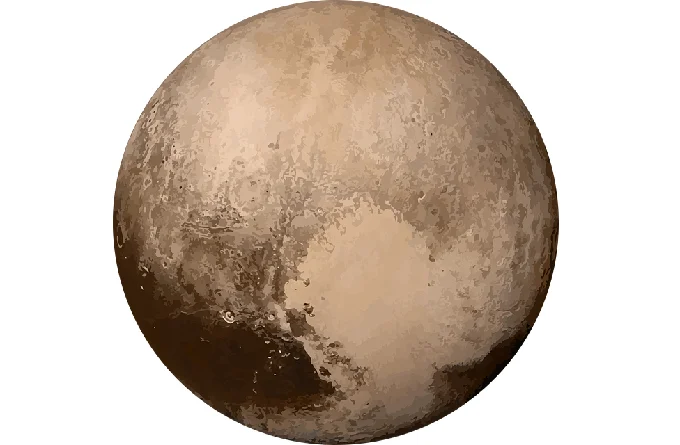Dwarf planet: 10 interesting facts about Pluto


After its discovery in 1930 by the American astronomer Clyde Tombaugh, the planet Pluto became the subject of heated debate among the world’s leading scientists. At first, Pluto was perceived as a full-fledged planet, but in August 2006, it was “demoted” to the status of a dwarf, although not everyone agrees with this decision. The celestial body is at a gigantic distance from the earth (about 5.7 billion km), so there is still too little information.
Interesting facts about Pluto
- An English schoolgirl invented the name of the planet. Pluto, in ancient mythology, is the god of the underworld, where the souls of the dead go. The name for the recently opened object was chosen by 11-year-old Venetia Burney, who lives in Oxford and is fond of the histories of Ancient Greece. When the competition for the best name was announced, her grandfather passed on the granddaughter’s proposal to a friend professor of astronomy. He shared the idea with colleagues from the Lowell Observatory in the United States. The infinitely distant cold world, bound by ice, is truly associated with death. For the victory, the girl was paid 5 British pounds, which is about 300 pounds in modern money.
- Pluto and Neptune may collide. If you study the schematic orbits of these two bodies, it might seem that a collision between them is inevitable because their trajectories intersect. However, in reality, objects have never approached each other at a dangerous distance, although such a scenario is possible in the distant future. For every two revolutions of Pluto around the Sun, Neptune manages to make three revolutions, and this cycle lasts 495 years.
- Pluto is smaller than some satellites of the planets. The diameter of the largest object in the Kuiper belt is 2376 thousand km. The mass is only 0.22% of the earth. Pluto is inferior in size to many satellites (Titan, Callisto, Triton, Luna, Ganymede, etc.).
- The surface of the planet is covered with rocks and glaciers, formed mainly from methane and nitrogen. According to one hypothesis, there is an ocean under them, which consists of liquid ammonia and water. The bowels of Pluto warmed up after a collision with an unknown space object, melting the glaciers. The estimated depth of the ocean is 100-180 km, which means that the water on Pluto is 3 times more than on earth.
- As it turned out, a lofty nitrogen layer with impurities of carbon monoxide and methane arises periodically. The gaseous envelope is subject to not fully understood seasonal changes. When moving in the direction from the Sun, it freezes and settles in the form of snow, and approaching the star at a sufficiently close distance causes active ice melting. The vapor rises above the surface, forming the atmosphere again. Pluto has feeble gravity, and the speed of solar winds reaches 1.6 million km / h, so gases are swept into outer space. The planet has a long tail of methane ions, like a comet.
- Hills, freely moving on the surface, are commonplace for Pluto. They likely slide on the nitrogen ice, changing their position under the influence of convective forces acting inside the planet. Giant icebergs were up to a 20 km long drive across the plains, accumulating and forming vast hilly areas.
- Pluto has as many as 5 moons: Charon, Hydra, Styx, Kerberos, and Nix. The first is the most interesting one. Pluto and Charon are often considered binary systems because both objects rotate in space around the same point. The satellite is only 2.5 times smaller in size than the dwarf itself.
- The path to the stars: eternal flight. For the first time in history, the ashes of an outstanding astronomer were placed on an interplanetary station and sent on a journey to the celestial body he discovered. The New Horizons probe, which became the last resting place for Clyde Tombaugh, began its mission in 2005 and sent the first high-quality images of Pluto and its moons 10 years later.
